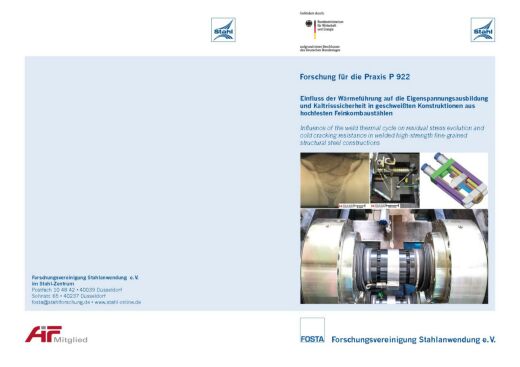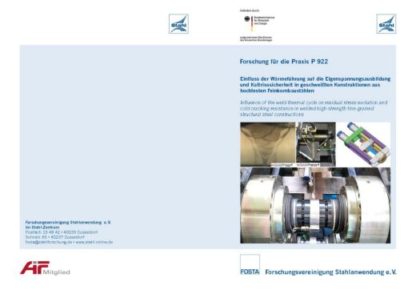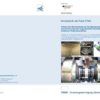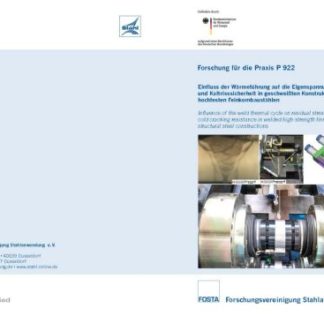Description
P 922 – Influence of the weld thermal cycle on residual stress evolution and cold cracking resistance in welded high-strength fine-grained structural steel constructions
Based on economical, constructional and aesthetical concepts, modern steel structures are increasingly designed to provide lean and lightweight constructions. This is accomplished by increasing application of highstrength fine-grained structural steels with proof stress ≥ 690 MPa permitting weight reduction by 30 % to 50 % and cost saving of 5 % to 15 %.
The potential of high-strength finegrained structural steels can however not readily be exploited in consideration of today’s directives and codes. The intended research project was on the one hand aimed at examining basic findings concerning the influence of the weld thermal cycle on residual stress evolution and cold cracking resistance taking account of the surrounding structure, and on the other hand at establishing a basis for an improvement of technical guidelines and standards which allow the fabricator to produce reliable welds with a better exploitation of the material properties. Specifically the load-bearing capacity and safety of the weld determine the structural design and, hence, the sustainable and economical use of these steel grades. The relationship between the amount of arising residual stresses and the weld thermal cycle in real structures is currently understandable only qualitatively which leads to a more conservative design of today’s welded structures. Economical processing of high-strength steels is determined above all by avoiding cold cracking, apart from achieving demandoriented mechanical properties in the weld area. In the existing codes, preheating is recommended as an effective measure to avoid cold cracks. However, these recommendations rely predominantly on findings obtained in laboratory welding of small specimens under free shrinkage. But the principal causes of residual stress formation such as inhomogeneous local heating nd cooling of the areas near the weld, and most notably structural shrinkage restraint by surrounding assembly groups, are not covered by those findings. TheFormkompleinfluence of the weld thermal cycles, especially local preheating, on the structural load of a construction is currently largely unknown.
The objective of this research project was a quantification of the influence of the weld thermal cycle on residual stress formation in welded structures as well as statements regarding influences and reduction of residual stresses and, hence, regarding the overall structural load of welded structures. In this respect, it was intended to clarify the relationship between the weld thermal cycle and the resulting residual stress under additional shrinkage restraint produced by successive augmentation of the restraint intensity. Furthermore, an investigation of the transferability of experimental welding results obtained from small specimens according to applicable codes to real component geometries was achieved. Systematic low load and component weld test with specimens welded under defined restraint were performed. The influence of the heat control on local residual stresses and structural loads due to reaction stresses was analysed. It was observed that the level of heat control significantly affects the local residual stresses and the overall structural load of welded structures. A decreased interpass temperature proved to be beneficial in particular. Thus, it is possible to improve existing heat control concepts for high strength steels and, furthermore, an advanced avoidance of cold cracking.
The research project (IGF-Nr. 17267 N) was carried out at Universität Stuttgart, Institut für Konstruktion und Entwurf and at Bundesamstalt für (BAM), Fachbereich 9.4 – Integrität von Schweißverbindungen, Berlin. FOSTA has accompanied the research project work and has organized the project funding from the Federal Ministry of Economics and Technology through the AiF as part of the programme for promoting industrial cooperation research (IGF) in accordance with a resolution of the German parliament.
Only available in german language.
Published in:
2015
Authors:
T. Kannengießer, D. Schröpfer




